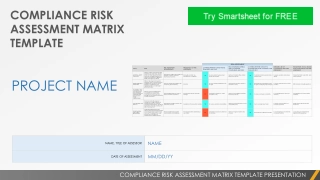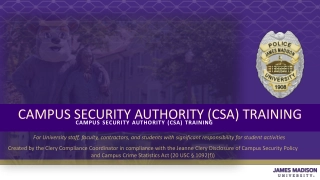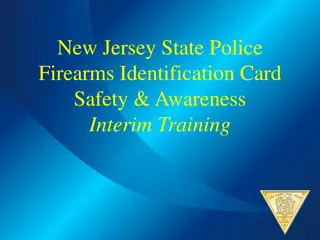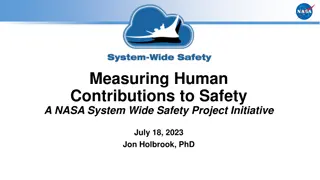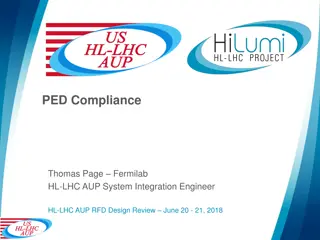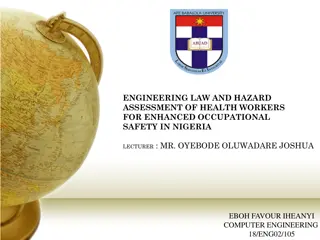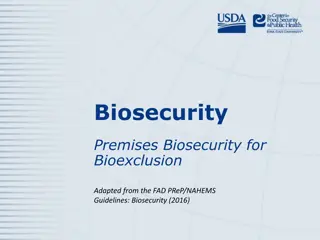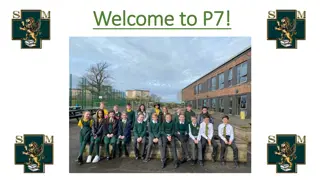Classroom Security for Existing Educational Facilities: Ensuring Safety and Compliance
Explore the vital aspects of securing schools for life safety, focusing on classroom security within educational facilities. Learn about the importance of proper locking systems, acceptable types, NFPA 101 life safety code requirements, and ensuring unobstructed egress for occupants. Discover key regulations and guidelines to maintain a safe learning environment for students and staff.
Download Presentation
Please find below an Image/Link to download the presentation.
The content on the website is provided AS IS for your information and personal use only. It may not be sold, licensed, or shared on other websites without obtaining consent from the author. Download presentation by click this link. If you encounter any issues during the download, it is possible that the publisher has removed the file from their server.
Presentation Transcript
Securing Schools While Ensuring Life Safety: Classroom Security for Existing Educational and Day Care Facilities State Fire Marshal s Office Joe Delaune, Chief Architect, CBO James Edwards, Enforcement Major- Zone B
LOCKING The function of a lock is to provide security, however, if it s not properly selected or installed, it could jeopardize the safety of the occupants. Simply put, locks must control ENTRY to a space while allowing the occupants the ability to freely EXIT the space. 3
Acceptable Locking System Types Free Egress Delayed-Egress Locks Access-Controlled Egress Doors Special Locking Arrangements in Healthcare Occupancies Electric Strikes Magnetic Lock Releasing Devices 4
NFPA 101, Life Safety Code Requirements 4.5.3.2 Unobstructed Egress. (Fundamental Requirements) In every occupied building or structure, means of egress from all parts of the building shall be maintained free and unobstructed. No lock or fastening shall be permitted that prevents free escape from the inside of any building other than in health care occupancies and detention and correctional occupancies where staff are continually on duty and effective provisions are made to remove occupants in case of fire or other emergency. Means of egress shall be accessible to the extent necessary to ensure reasonable safety for occupants having impaired mobility 5
NFPA 101, Life Safety Code Requirements 7.2.1.5.1 Doors shall be arranged to be opened readily from the egress side whenever the building is occupied. 7.2.1.5.2 Locks, if provided, shall not require the use of a key, a tool, or special knowledge or effort for operation from the egress side. 7.2.1.5.3 The requirements of 7.2.1.5.1 and 7.2.1.5.2 shall not apply where otherwise provided in Chapter 18 through Chapter 23, (Healthcare and Detention occupancies). 6
NFPA 101, Life Safety Code Requirements 7.5.1.1 Exits shall be located and exit access shall be arranged so that exits are readily accessible at all times. 7.5.2.1 Access to exits shall not be through.. Rooms or spaces subject to locking.. 7.4.1.6 Elevator lobbies shall have access to at least one exit. Such exit access shall not require the use of a key, a tool, special knowledge, or special effort. 7.1.5 Projections from the ceiling shall be not less than 80 nominal above the finished floor (mag lock installations) 7
Fundamental Locking Concept Lock people out not in! 8
NON-COMPLIANT DEVICES BE CAREFUL! There are MANY devices on the market that are NOT ACCEPTABLE for use in SCHOOLS. 9
NFPA 101, Life Safety Code Occupancy Requirements EDUCATIONAL & DAY CARE, Chapters 14 & 16 Delayed-egress locks are permitted. Access-controlled egress doors are permitted. 10
Specific Allowances INTERPRETIVE MEMORANDUM IM 2018-03 and IM 2019-01 provide specific allowances for schools and descriptions of the various types of special locking arrangements. These memos can be viewed on our website at LASFM.ORG in the Plan Review section, under the Code Interpretations drop down. 11
Interpretive Memorandum 2018-03 Summary: Classroom Security for Existing Educational (grades K 12) and Day Care Addresses requirements that will allow for one additional releasing operation on existing classroom doors. Applies only to existing educational and day care occupancies that are subject to economic and structural restraints that prohibit a code compliant retrofit 13
Interpretive Memorandum 2018-03 Only one single cylinder dead bolt lock with a thumb turn on the on the interior (classroom) side per door shall be permitted Locks shall be activated within the classroom by teachers at their discretion for emergency purposes only Double cylinder locks shall not be permitted. Keyed access shall be provided from the corridor side All single cylinder locks shall be keyed alike and responsible school staff shall have keys available at all times 14
Interpretive Memorandum 2019-01 Summary: Special Locking Arrangements DELAYED-EGRESS LOCKING SYSTEMS Allowed in schools and in assembly spaces other than on the main entrance/exit. NOTE: An approved supervised automatic sprinkler system or an approved automatic fire detection system is required for the building in order to use this system. Emergency lighting is also required at doors that are equipped with delayed-egress locks. Only one (1) delayed-egress lock is permitted in any path of egress to a public way. 15
Interpretive Memorandum 2019-01 Special Locking Arrangements ACCESS-CONTROLLED (SENSOR RELEASED) EGRESS DOOR LOCKING SYSTEMS Allowed in schools and assembly spaces. NOTE: The Assembly Occupancy chapter does not permit access-controlled egress door systems to be energized while the building is occupied by the assembly (50 or more people). 16
Interpretive Memorandum 2019-01 Special Locking Arrangements ELECTRIC STRIKES AND LATCH RETRACTING DOOR HARDWARE Allowed in schools and assembly spaces. NOTE: NFPA 80 requires electric strikes and latch retracting door hardware on fire rated door assemblies to be listed and to fail such that positive latching is maintained. 17
Interpretive Memorandum 2019-01 Special Locking Arrangements ELECTRICALLY CONTROLLED (ELECTROMAGNETICALLY LOCKED) EGRESS DOORS These locking system types are permitted under specific conditions, and are recognized by the use of an electromagnetic lock released by an appropriately listed, mechanically activated releasing device affixed to the door (door hardware release). Locking system units must be tested and listed in accordance with UL 294. 18
Louisiana Law R.S. 40:1574 In accordance with R.S. 40:1574, renovations to a building require submittal of plans and specifications to the State Fire Marshal s office for review prior to the work being performed. Locking installations fall into the definition of renovation. The information required in IM 2018-03 and IM 2019-01 must be submitted for plan review when locking devices are proposed to be installed. A satisfactory review must be performed by this office prior to the installation of the locking hardware. 19
LOUISIANA DEPARTMENT OF PUBLIC SAFETY AND CORRECTIONS OFFICE OF STATE FIRE MARSHAL, CODE ENFORCEMENT AND BUILDING SAFETY Questions? Joe Delaune, Chief Architect, CBO James Edwards, Enforcement Major Joe.Delaune@la.gov James.Edwards@la.gov THANK YOU!









